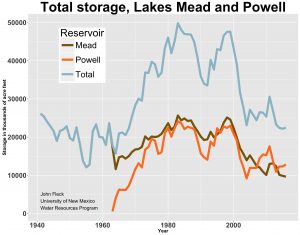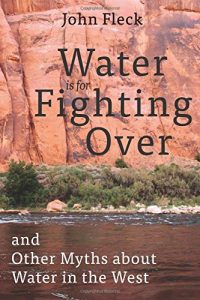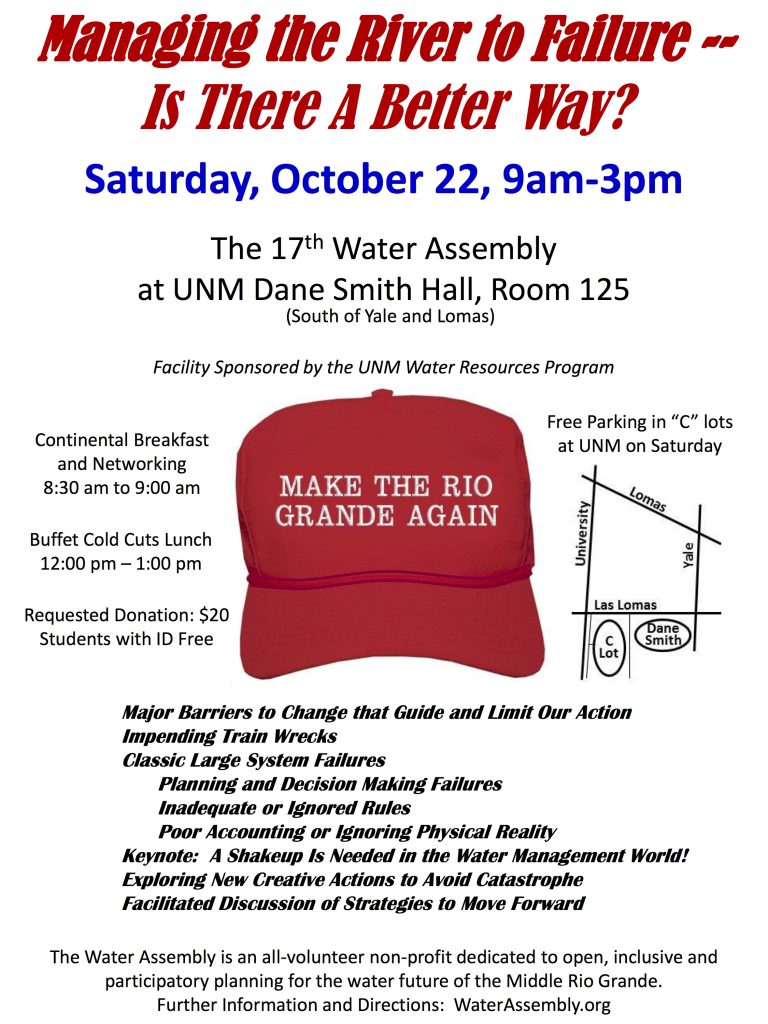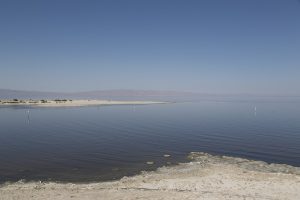There is something manifestly silly about the assertion, in table 5a of the Bureau of Reclamation’s 2015 Colorado River Accounting and Water Use Report, that the Imperial Irrigation District diverted 2,455,649 acre feet of water from river at Imperial Dam that year.
Park of the core curriculum for our University of New Mexico Water Resources Program students is an intensive field class in which students go out and measure water in a variety of ways (flow, chemistry, ecosystem properties, etc.). One of the class’s purposes, UNM engineering water guru Mark Stone tells the students, is to instill a healthy sense of the humility in the face of the difficulty of accurately measuring the parameters we’re using to manage water.
The notion that one can measure the flow of water with seven digit precision is absurd.

Hoover Dam stilling well, Oct 18, 2010
This is not to meant to be a criticism of the accuracy of the Bureau’s work. Far from it. One of the early tangents in the research I did for my book was a dive into the measurement of water, which included a memorable visit to the stilling well within Hoover Dam, where one of the river’s most important measurements is made. I developed the utmost respect for the people measuring water on the Lower Colorado River. They take their job seriously, and do it well.
Accuracy matters, and doing the work as accurately as one can matters a lot. But equally important is the credibility of the methodology, and the fact that the people using the numbers to make management decisions have a shared understanding that the numbers are good enough for the purposes at hand.
Jay Lund wrote about this last week, discussing disparities in the reported numbers for pumping from the Sacramento-San Joaquin Delta. Jay cites seven different measures that in some cases differ by enormous amounts. Which one is right?
Measuring water is hard. There is no “right” number. What matters is that the numbers are collected for an agreed-upon purpose, and that there is confidence among those who need to use them that they are being collected in a fair and diligent way.
In the case of the USBR’s water accounting report cited above, the measurement and accounting is a requirement of the Supreme Court’s 1963 decision in the case of Arizona v. California for determining allocation of Lower Colorado River water. There’s a clearly defined purpose, and little argument over the methodology used. This is one of Elinor Ostrom’s points in her book Governing the Commons – that agreement on the numbers is critical to successful common pool resource management. They don’t have to be “right” in some absolute technical sense, so much as reasonable enough for everyone to agree to use them.
So did Imperial divert precisely 2,455,649 acre feet of water in 2015? Of course not. But we’ve all agreed that it’s the number we’ll use.





